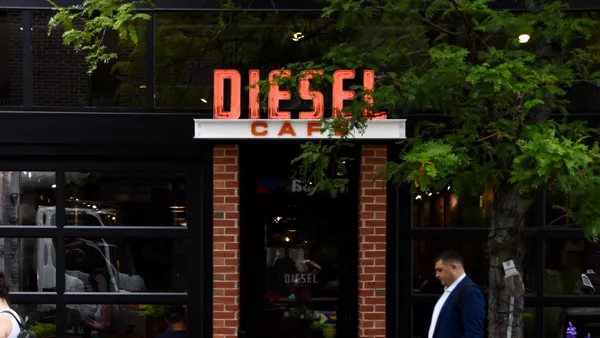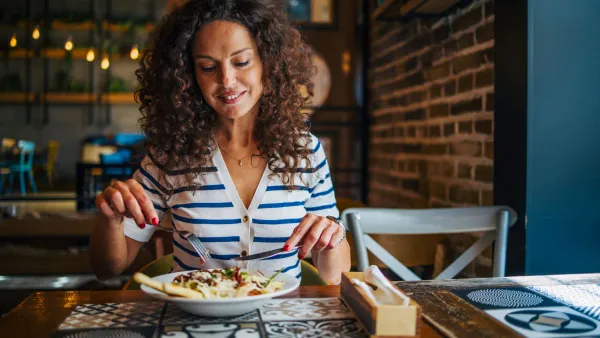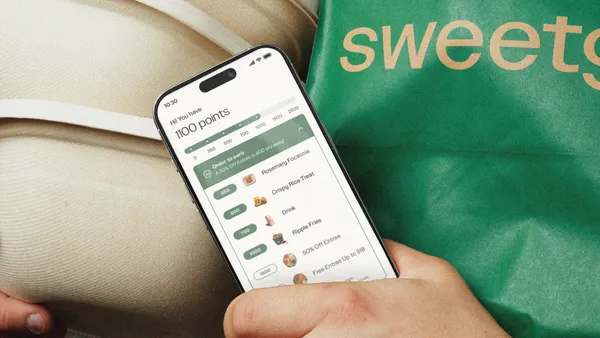Dive Brief:
- Bars and fine dining restaurants have suffered the most from the COVID-19 pandemic since initial lockdowns went into place in mid-March, according to Upserve's State of the Restaurant Industry 2020 report. Both segments experienced about a 90% sales loss in March. Fine dining has since recovered to declines of about 60% while bars are down nearly 70%.
- Casual dining also took a nosedive in March, with sales volumes down by over 80%. The segment has since recovered to declines of roughly 60%. Meanwhile, fast casual was down around 70% in March and is now hovering around a loss of 50%.
- Cities where the industry has been impacted the most by the pandemic include San Francisco (-71% year-over-year), New Orleans (-72%) and Boston (-70%). The Northeast Region overall has been hit hard, with New York City, Philadelphia, Boston and Washington, D.C., all experiencing year-over-year sales losses of more than 65%.
Dive Insight:
Considering the disparate closure regulations across the country, there doesn't seem to be a discernible difference between sales losses among cities with stricter guidelines. New Orleans restaurants, for example, expanded to 50% capacity in June, but lost 72% from March through October compared to the year ago period. The city has since moved to 75% occupancy. By comparison, San Francisco didn't get a green light for 50% capacity until late October and has shut down all indoor dining again this week. The city has lost 71% of sales from March to October year-over-year.
Still, all signs point to bigger challenges for restaurants in cold weather states as winter looms. Outdoor dining has been a lifeline for many restaurants, and that option could go away if winterization efforts don't convince diners to continue eating outside. Though such efforts are costly, 44% of consumers said they would be likely to go to a restaurant and sit outside in an enclosed and heated tent, according to the National Restaurant Association.
The holidays may provide a bit of a tailwind for some restaurants, according to the Upserve report, which found that consumers are planning to celebrate with a restaurant meal, whether that be off-premise or for dine-in. During Mother's Day and Cinco de Mayo, for example, sales spiked up to 306%. Still, the research also shows there has been an above-average drop in sales in the 48 hours following each holiday, so that tailwind could be short lived. Gift card promotions could help soften this decline, however, as consumers are expected to spend nearly 30% more on restaurant gift cards this year.
Restaurants are increasingly turning to digital gift cards, as more consumers rely on digital channels to access restaurant food. According to new research from The NPD Group, for example, digital restaurant orders grew by 138% in the July, August and September quarter.
Along these lines, Upserve's data shows that online ordering sales in the casual dining segment spiked near $2 million in May, versus about $250,000 in early March. Conversely, fine dining and fast casual segments both only experienced a nominal lift in online ordering.
As restaurants had to quickly shift to off-premise channels, many adopted their own online ordering systems, moving away from third-party systems that tend to charge higher commission fees. By adopting native online ordering functionality, restaurants are able to avoid those fees while also maintaining a direct-to-consumer relationship. The restaurant industry is projected to lose $240 billion by the end of the year due to the COVID-19 pandemic. Concepts that aren't subjecting their razor-thin margins to third-party fee are likely in the best position to weather pandemic disruption.













